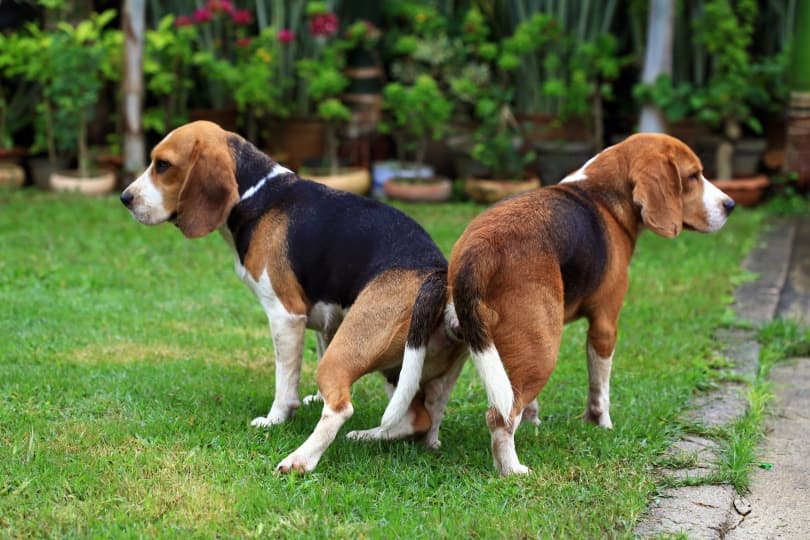Canine reproduction is a complex process governed by intricate biological and behavioral mechanisms. Understanding these mechanisms is crucial for breeders aiming to facilitate successful mating sessions. This article delves into the various stages of canine copulation, highlighting the physiological and behavioral aspects that contribute to effective reproduction.
Phases of Canine Copulation
Canine copulation comprises several distinct phases, beginning with the courtship and ending with the dismount. The process is characterized by a unique phenomenon known as the “tie,” where the male and female dogs are physically locked together for a period ranging from a few minutes to half an hour. This phase is critical for the transfer of sperm and, ultimately, for successful fertilization.
Biological Mechanisms Underpinning Copulation
The biological foundation of canine copulation involves hormonal signals that prepare both male and female dogs for mating. In females, the estrus cycle dictates receptiveness to mating, while in males, testosterone levels influence mating behavior and capability. The copulatory tie, facilitated by the engorgement of the male’s bulbus glandis, ensures adequate time for sperm to be deposited directly into the female’s reproductive tract.
Behavioral Aspects of Canine Mating
Behaviorally, canine mating is initiated through a series of interactions that signal readiness and willingness to mate. These include playful behavior, mounting, and finally, the copulatory lock. Understanding these behaviors is essential for breeders to identify the optimal mating period and to manage the mating process effectively.
Implications for Breeders
For breeders, a deep understanding of canine copulation is instrumental in managing breeding programs. Recognizing the signs of readiness in both males and females, as well as ensuring the health and well-being of the dogs, can significantly impact the success rate of breeding efforts. Additionally, knowledge of genetic factors and potential hereditary conditions is crucial for responsible breeding practices.
Genetic Considerations in Canine Breeding
Understanding the genetic underpinnings of canine reproduction is essential for breeders seeking to ensure the health and vitality of offspring. Genetic screenings prior to mating can identify potential hereditary conditions, allowing breeders to make informed decisions about pairing. Moreover, genetic diversity is crucial for maintaining the overall health of the breed, and reducing the incidence of inherited diseases. Advances in genetic testing provide breeders with tools to assess the genetic health of potential mating pairs, thereby enhancing the quality of future generations.
Technological Advances in Canine Reproduction
Recent technological advancements have significantly impacted canine reproduction, offering breeders novel tools for monitoring and facilitating successful matings. Innovations such as reproductive ultrasonography allow for precise tracking of the female’s estrus cycle, optimizing timing for mating. Additionally, artificial insemination techniques have broadened the possibilities for genetic diversity by enabling the use of semen from distant males. Cryopreservation of semen is another milestone, preserving genetic material for future use and aiding in the conservation of genetic lines.
Ethical Considerations in Canine Breeding
Ethical breeding practices are paramount in canine reproduction, ensuring the welfare of both the breeding animals and their offspring. Responsible breeders prioritize the health, temperament, and well-being of their dogs, adhering to breeding standards that discourage the propagation of harmful genetic traits. Ethical considerations also extend to the treatment of retired breeding dogs, emphasizing the importance of providing them with loving, permanent homes. Awareness and adherence to ethical breeding principles are essential for the sustainability of healthy canine populations.
Key Aspects of Effective Canine Mating
- Optimal Timing: Recognizing the female’s fertile window is crucial for successful conception;
- Health Screening: Ensuring both males and females are in good health and free from genetic diseases;
- Behavioral Readiness: Identifying signs of readiness in both dogs to facilitate a stress-free mating environment;
- Post-Mating Care: Providing care and monitoring for the female during gestation.
Comparative Analysis of Traditional vs. Assisted Reproductive Techniques
| Aspect | Traditional Mating | Assisted Reproductive Techniques |
|---|---|---|
| Success Rate | Variable, depending on timing and compatibility | High, with precise control over timing and sperm selection |
| Genetic Diversity | Limited to physically present mates | Broad, enabling international genetic exchange |
| Health Risks | Lower risk of STDs, higher physical risk for dogs | Minimized physical risk, potential for genetic screening |
| Cost | Generally lower, barring complications | Higher due to technological and veterinary involvement |
| Ethical Considerations | Must ensure animal welfare and consent | Requires ethical use of technology, avoiding overbreeding |
Conclusion
In conclusion, canine copulation is a multifaceted process influenced by biological and behavioral factors. A comprehensive understanding of these factors enables breeders to optimize mating strategies, thereby enhancing the likelihood of successful reproduction. Through careful observation and management, breeders can contribute to the health and vitality of future canine generations.



